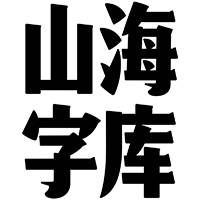Examining the Fascinating Typographic History Of Eye Charts
My graphic design students love to design posters using the classic eye chart composition, and they frequently ask "What typeface should I use for this?" Not having a definitive answer has always been frustrating, so I decided to investigate to find out what typeface is used on eye charts.
I started my quest by asking my ophthalmologist, who enthusiastically provided a dizzying amount of technical information about the variety of eye charts and tests designed for different audiences and eye conditions. Suddenly, a simple question became a series of discoveries. Not only is there no one letterform design or font used for eye charts; the letterform designs are more appropriately called optotypes, of which there are several versions. There is a science to the design of optotypes and their legibility at specific distances.
Since I am a graphic designer and not an eye or vision expert, I will forgo the technical explanations and focus on optotypes used on several significant charts to provide a better understanding of this complex and fascinating subject.
Advertisement
Eye charts are designed to test visual acuity, or clarity of vision. Each chart design has limitations and advantages, depending on the clinical setting, patient profile, and diagnostic objective. To understand the differences between the charts, it is helpful to know a little historical background of standardized visual acuity testing.
The First Standardized Tests
Heinrich Küchler is one of the first individuals credited with creating an eye chart to test visual acuity.
Küchler, a German ophthalmologist, designed a chart in 1836 using figures cut from calendars, books, and newspapers glued in rows of decreasing sizes onto paper. These figures included cannons, guns, birds, farm equipment, camels, and frogs. This system was limited because the figures were not consistent in visual weight or style.
Dr. Küchler continued to refine his chart, and in 1843, published a new version using 12 rows of Blackletter letters decreasing in size. This chart was not widely adopted (hard to imagine why) and was published only once in 1843.1
The next significant development in visual acuity chart design was the Snellen Eye Chart, which is recognizable to most Americans from visits to the DMV.
-
 ShanhaiFonts
ShanhaiFonts
Brand:山海字库
Area:China

-
 Cangji Fonts
Cangji Fonts
Brand: 仓迹字库
Area: China

-
 JT Foundry
JT Foundry
Brand: 翰字铸造
Area: Taiwan, China

-
 Handmadefont
Handmadefont
Brand:
Area: Estonia

-
·千图字体
-
 HyFont Studio
HyFont Studio
Brand: 新美字库
Area: China

- ·The Future of Sex poster
- ·Chinese College Student Invents Smog Font
- ·Brother Moto Flat-Trackin' Tee
- ·How House Industries Designs Its Retrotastic Logos and Typefaces
- ·How to sell your typefaces
- ·Top 100 Fonts.com Web Fonts for May 2016
- ·Fonts Design of Childhood Memory
- ·Amazon Releases Ember Bold Font for the Kindle
- ·The Form Book by Borries Schwesinger
- ·Troubadour poster, Opera Plovdiv























